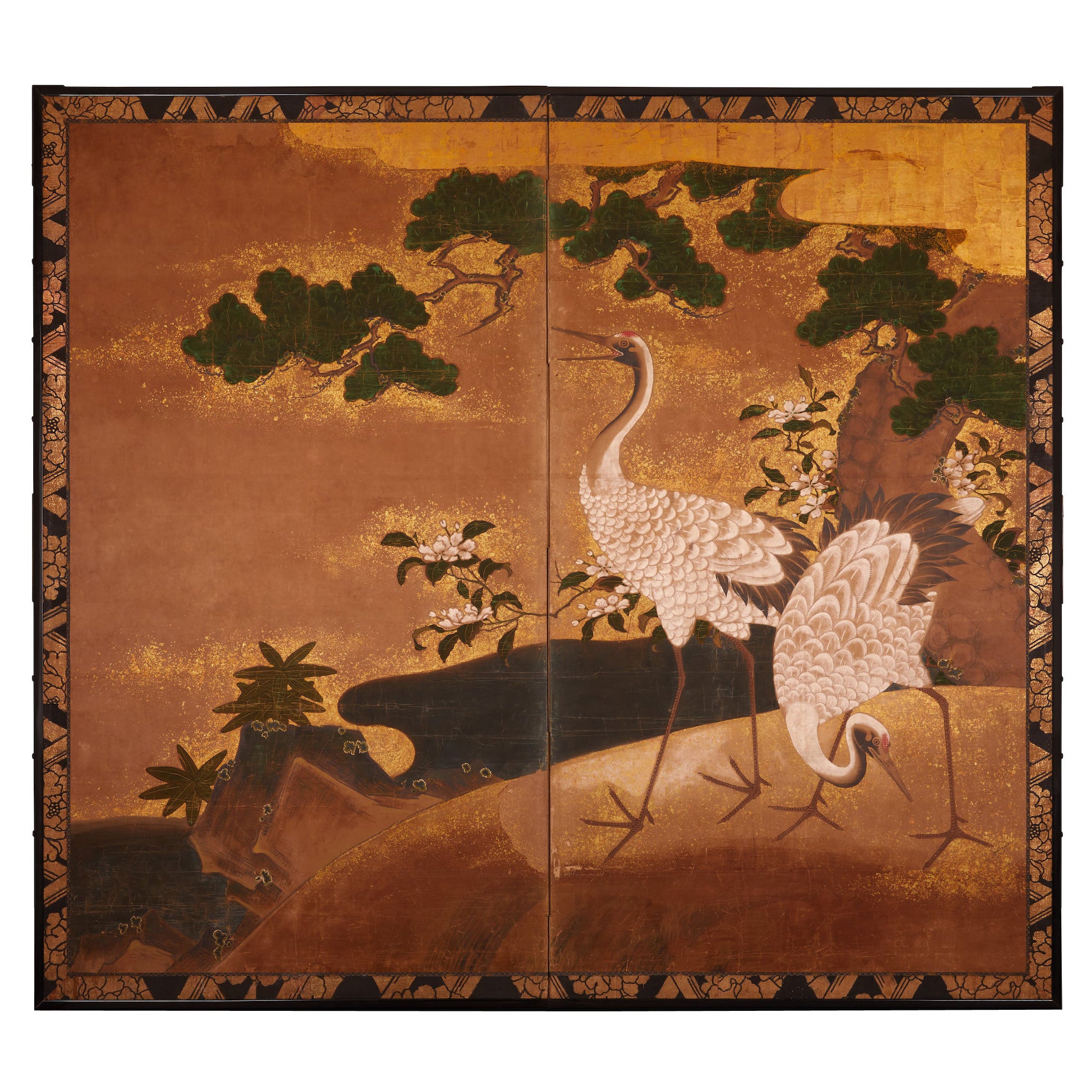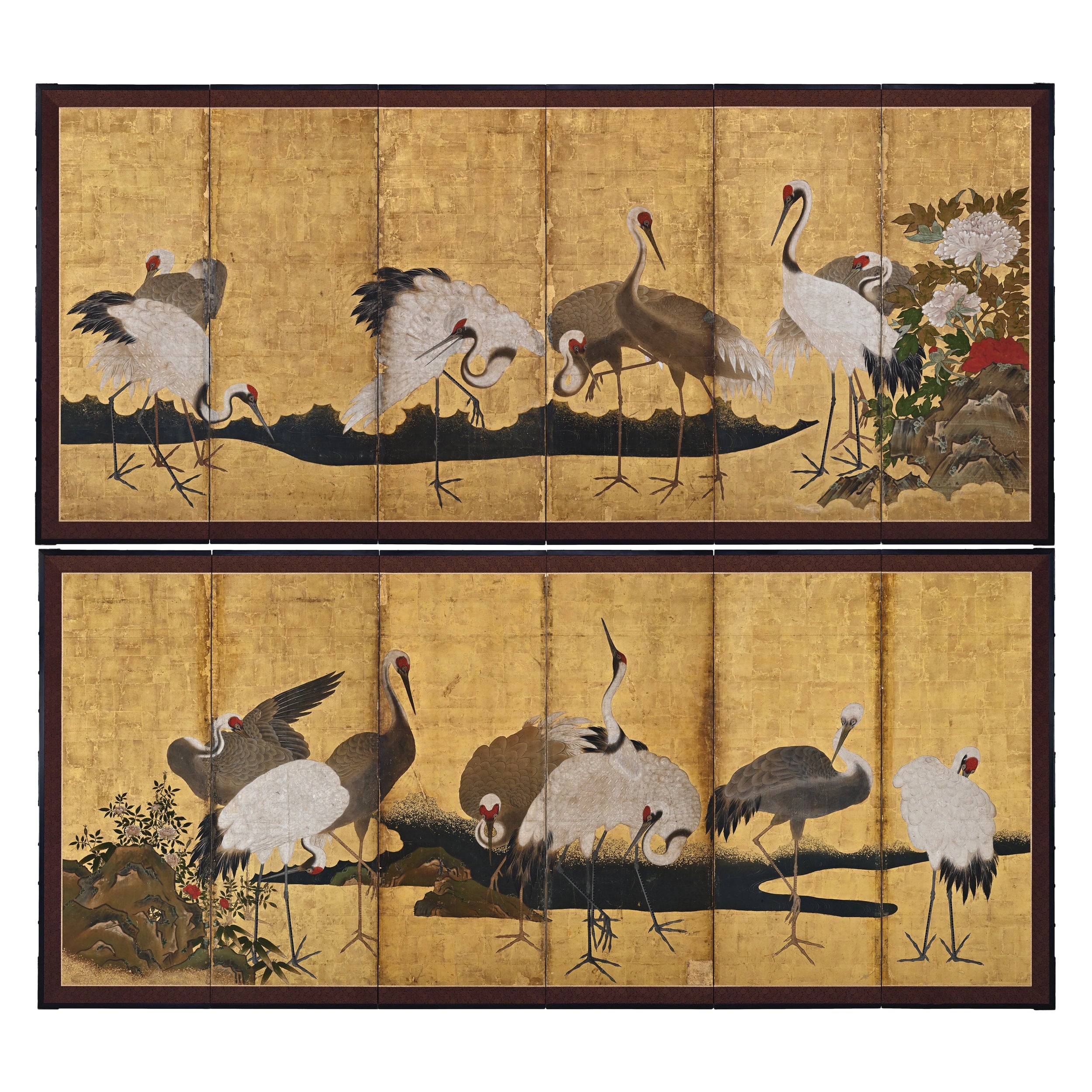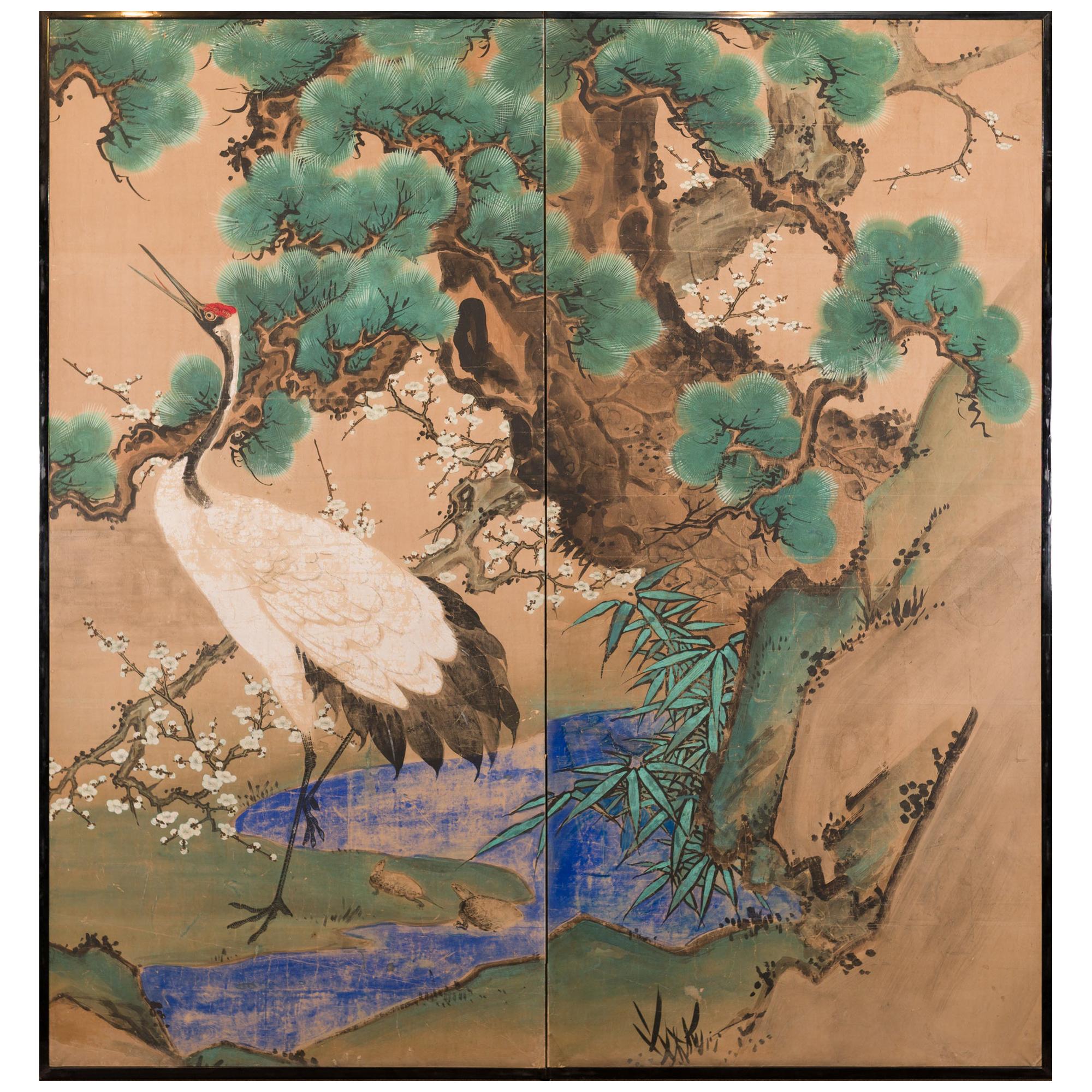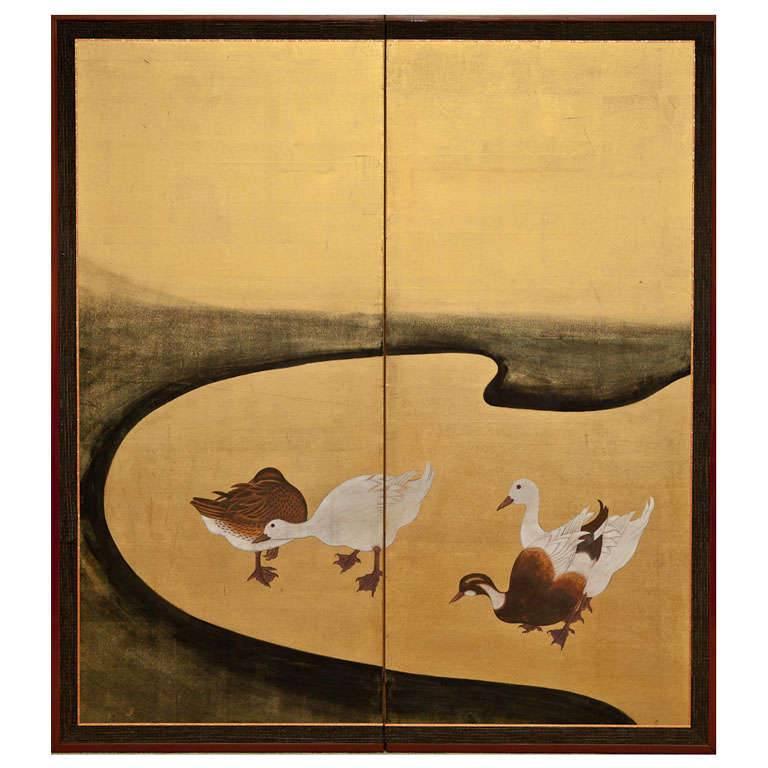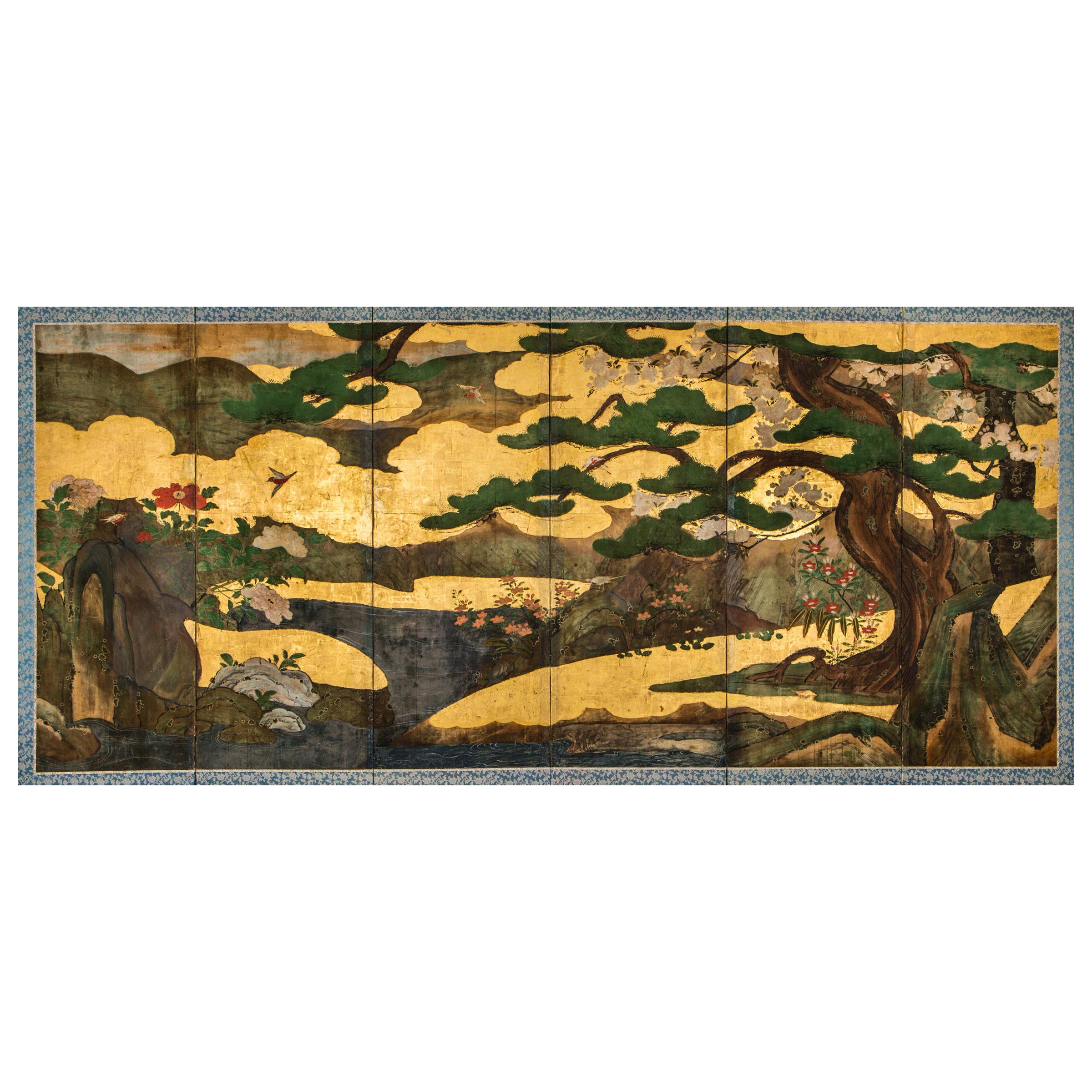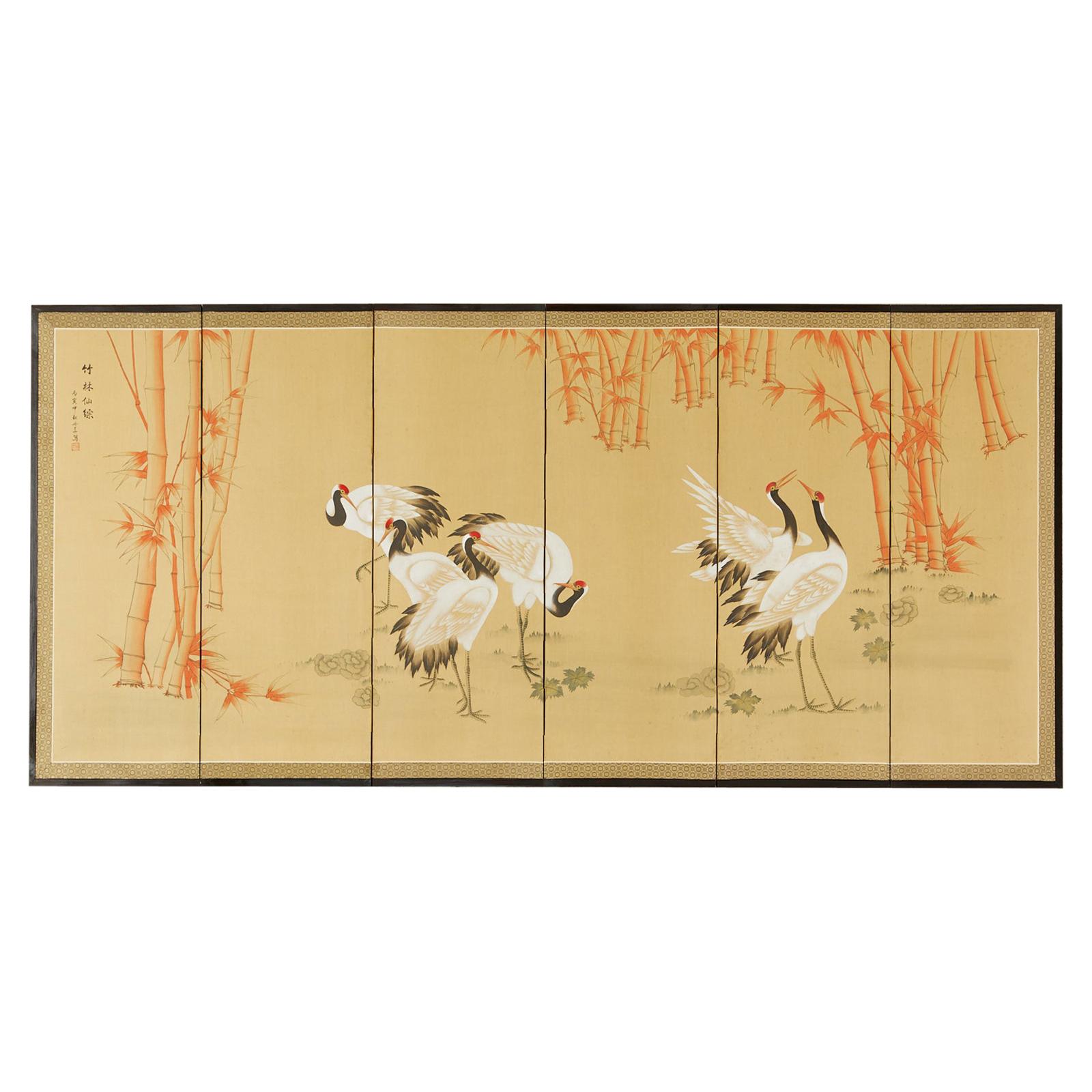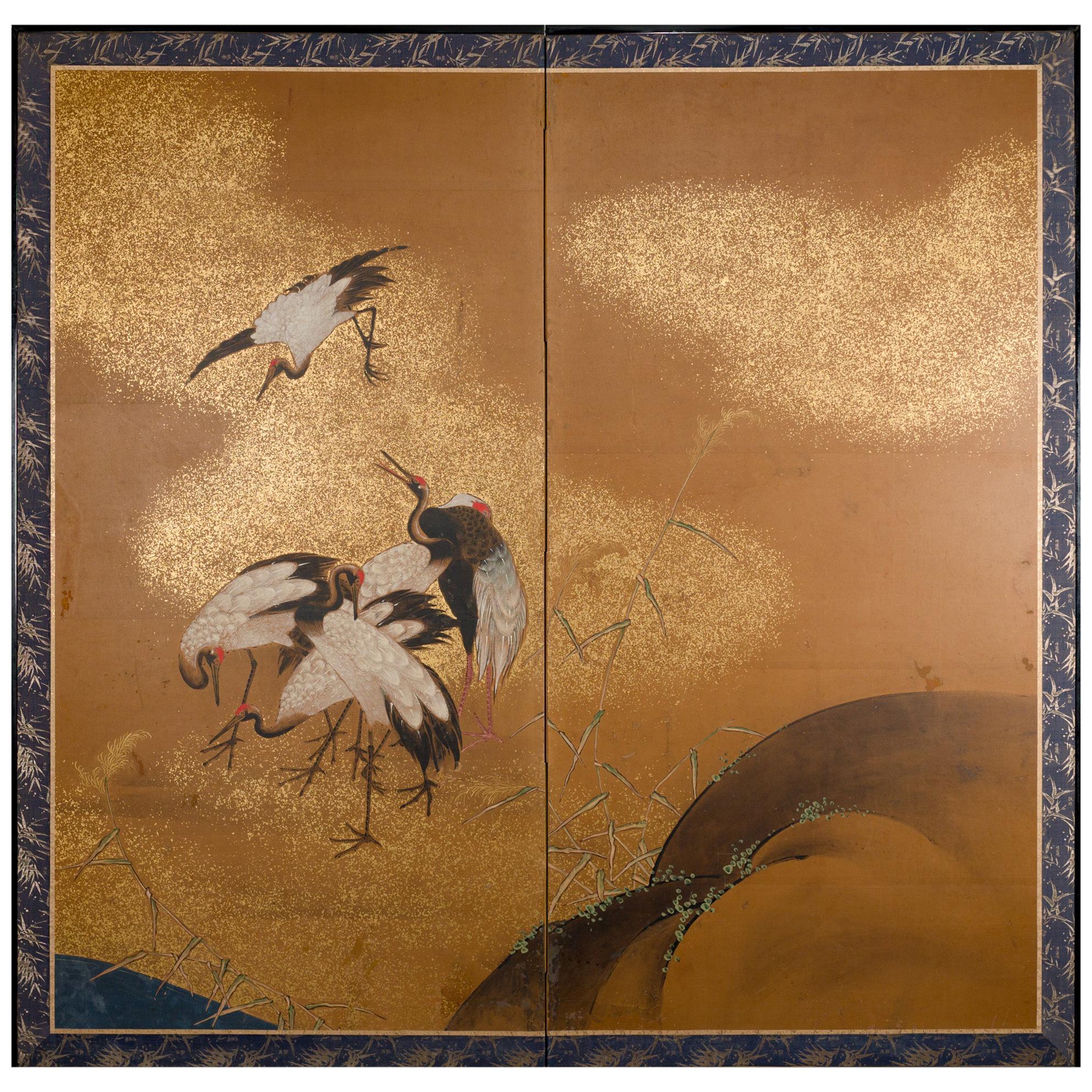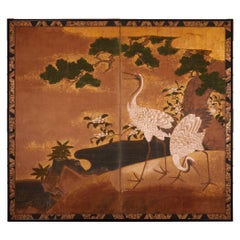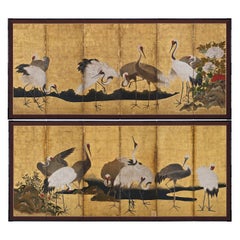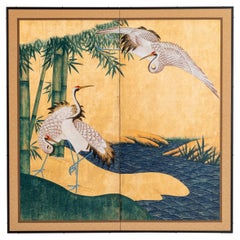
Contemporary Hand-Painted Japanese Screen of Cranes by the River
View Similar Items
1 of 8
Contemporary Hand-Painted Japanese Screen of Cranes by the River
About the Item
- Dimensions:Height: 54 in (137.16 cm)Width: 54 in (137.16 cm)Depth: 0.5 in (1.27 cm)
- Materials and Techniques:
- Place of Origin:
- Period:
- Date of Manufacture:2021
- Production Type:New & Custom(Current Production)
- Estimated Production Time:Available Now
- Condition:
- Seller Location:10 Chater Road, HK
- Reference Number:Seller: AGSP2751stDibs: LU1480224872042
You May Also LikeView All
- Japanese Two-Panel Screen: Cranes on GoldLocated in Hudson, NYEarly Kano School painting of pine trees overlooking two beautifully painted cranes and floral design in a natural setting by water’s edge. Mineral pig...Category
Antique Late 18th Century Japanese Paintings and Screens
MaterialsGold, Gold Leaf
- 17th Century Japanese Screen Pair, CranesLocated in Kyoto, JPCranes Anonymous, Kano School. Edo period, second half of the 17th century. Pair of six-panel screens. Ink, pigment gofun and gold l...Category
Antique 1670s Japanese Edo Paintings and Screens
MaterialsGold Leaf
$85,000 / set - Japanese Two Panel Screen: Flowers by River's EdgeLocated in Hudson, NYMineral pigments on gilded silk with gilded bronze hardware. Signature reads: Shunkan.Category
Vintage 1930s Japanese Paintings and Screens
MaterialsBronze
- Japanese Two Panel Screen: Flowers by River's EdgeLocated in Hudson, NYMineral pigments on gilded silk with gilded bronze hardware. Signature reads: Shunkan.Category
Vintage 1930s Japanese Paintings and Screens
MaterialsBronze
- Japanese Two Panel Screen Amorous Cranes and TurtlesLocated in Hudson, NYJapanese two panel screen: Amorous Cranes and Turtles. In Japan, cranes symbolize fidelity as they mate for life and turtles symbolize longevity. Additionally, this screen also has the Japanese motif of sho-chiku-bai, or the three friends of winter (pine, plum, and bamboo). So called the three friends of winter because all three flourish during the cold months. This screen was originally fusuma doors...Category
Antique 1850s Japanese Edo Paintings and Screens
MaterialsWood, Paper
- Japanese Two Panel Screen Manchurian Crane and TurtlesLocated in Hudson, NYIn Japan, cranes symbolize fidelity as they mate for life and turtles symbolize longevity. Additionally, this screen also has the Japanese motif of sho-chiku-bai, or the three friends of winter (pine, plum, and bamboo). So called the three friends of winter because all three flourish during the cold months. This screen was originally fusuma doors...Category
Antique Mid-19th Century Japanese Edo Paintings and Screens
MaterialsPaper
Recently Viewed
View AllMore Ways To Browse
Chinese Lattice Screen
Chinese Gold Paper Screen
Chinese Wooden Screen Panels
Chinese Wall Paper Screen
Chinese Wooden Wall Panels
Lattice Screens
Asian Lattice Screens
Chinese Crane Painting
Gold Leaf Cranes
Chinese Screen Cranes
Gold Screen Crane
Hand Painted Japanese Screen Watercolor
Crane Paintings Gold Leaf
Chinese Byobu
Chinese Art On Silk
Panel Lacquered Screen
Japanese Set Mid Century
Gold Japanese Screens
